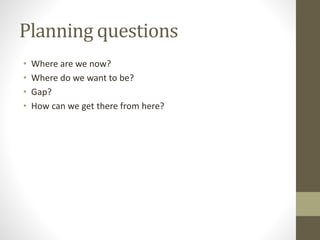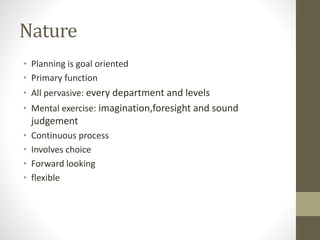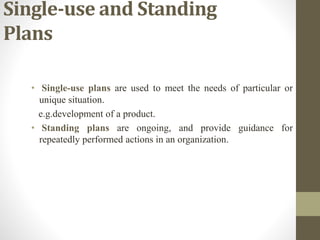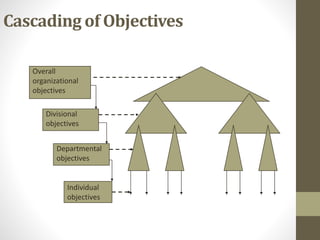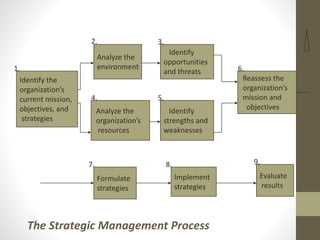Planning involves defining goals, strategies, and coordinated plans. It determines what to do, how, when, and by whom. Planning establishes objectives, assesses current status, identifies gaps, and develops hierarchical plans. It is goal-oriented, continuous, flexible, and involves choosing between alternatives. Planning provides direction, coordination, risk reduction, and facilitates control and decision-making. However, plans may create rigidity and not account for a dynamic environment. Effective planning requires top management support, participation, communication, and integration of plans.



